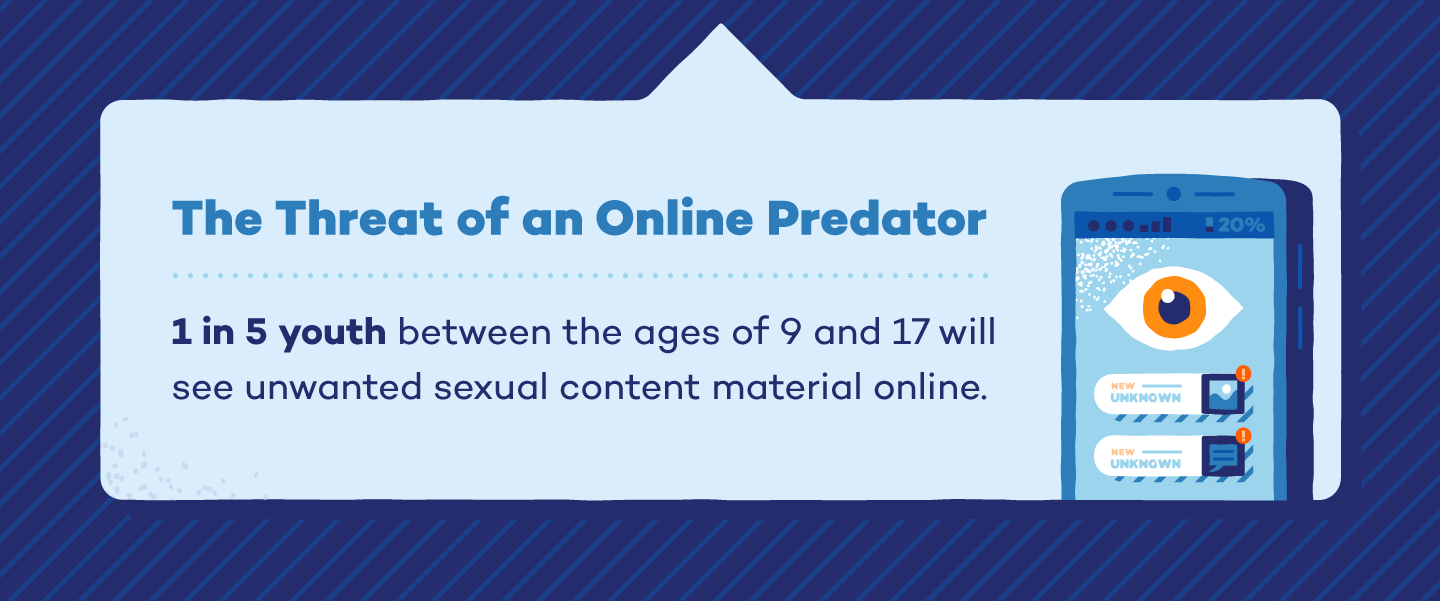
In 33% of cases, they ask children for sexually explicit photos of themselves, and in 23%, internet predators send unprompted sexually explicit photos of themselves. Online grooming statistics reveal that, in 34% of cases, cyber predators engage children in sexual conversation/roleplay as a grooming method, rather than a goal. Engaging in sexual conversation/roleplay with children is the goal in 8% of cases, while 2% of online child predators have financial goals. Pedophile statistics reveal that, in 32% of cases, the goal is to meet and have sexual contact with children. At 60%, the most common goal of internet predators is to obtain sexually explicit content of children. Unwanted sexual talk (16.9%) and unwanted sexual act requests (14.3%) follow, along with forced images (10.3%) and voluntary adult partners (8.6%). At 18.8%, unwanted sexual questions are the most common component of online sexual abuse against children. Sex offender statistics reveal that as many as 85% of online predators are hands-on abusers of children.Īt 22.5%, online solicitation is the most common sex offense against children on the internet.Īccording to facts about online predators, online sexual abuse ranks second, with 15.6% of victims having experienced it, followed by image-based sexual abuse, with 11%.14% of kids have met online predators in person, and nearly 75% of them did so more than once.75% of them didn’t tell a parent about it, and as much as 90% of parents will never know of such inappropriate contact.

Online predator stats reveal that 20% of kids have been sexually solicited online.


It’s estimated that, at any given time, there are 500,000 internet predators actively pursuing children through multiple online profiles.Their most likely victims are females aged 12-15, which they find on social media. The latest online predator statistics reveal that half a million of these perpetrators are a threat to children on any given day.


 0 kommentar(er)
0 kommentar(er)
